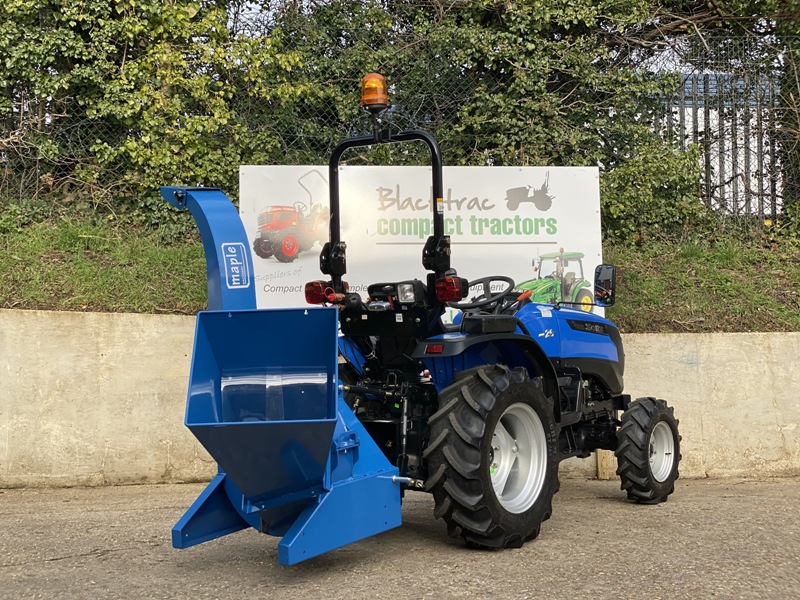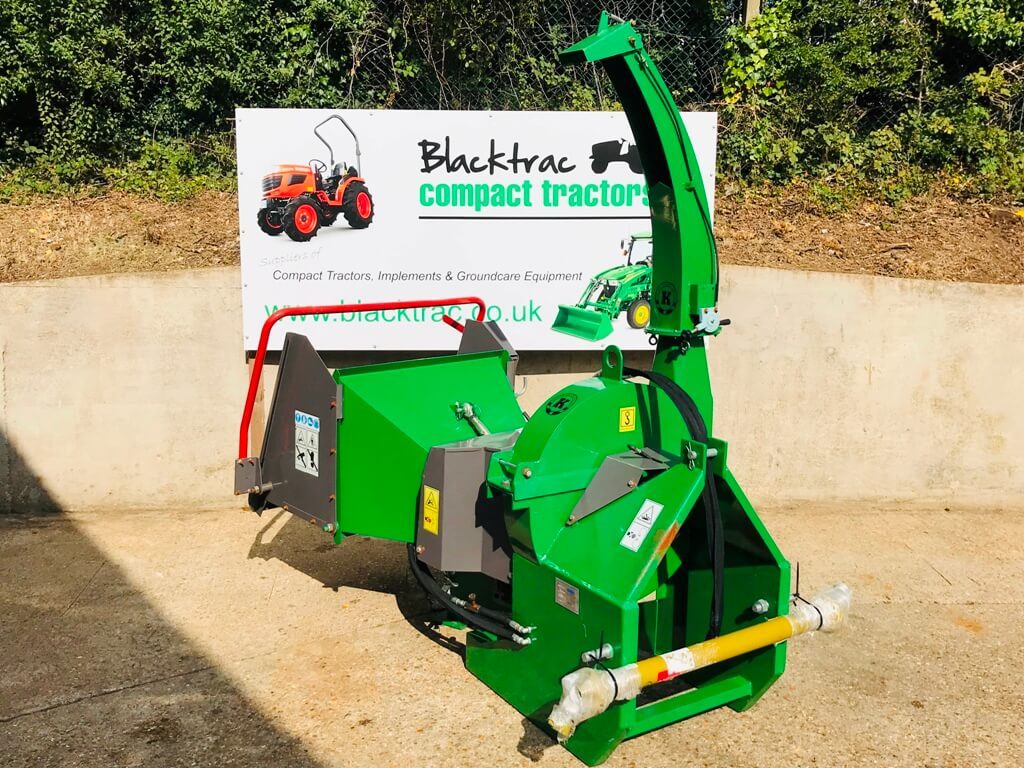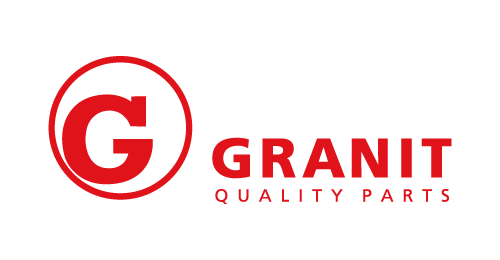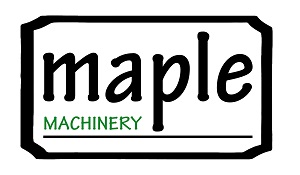Wood Chippers for compact tractors
In the world of small-scale farming, landscaping, and property maintenance, compact tractors have become invaluable tools for tackling a wide range of tasks. However, one accessory that can truly unlock the full potential of these versatile machines is a woodchipper. Whether you’re managing tree waste, creating mulch, or clearing overgrown areas, a woodchipper can be a game-changer in terms of efficiency and productivity.



Benefits of Using Woodchippers with Compact Tractors
- Streamlines the process of managing tree waste by turning branches, limbs, and other woody debris into valuable mulch or wood chips.
- Saves time and labour by eliminating the need for manual hauling or burning of debris.
- Promotes environmental sustainability by repurposing organic matter.
- Enhances efficiency by reducing the time and effort required for cleanup and disposal.
- Allows you to quickly and easily convert tree waste into a usable byproduct on-site.
- Eliminates the need for manually hauling away or burning debris.
Types of Woodchippers Suitable for Compact Tractors
When it comes to woodchippers for compact tractors, two main types stand out: PTO (Power Take-Off) woodchippers and hydraulic feed woodchippers.PTO (Power Take-Off) Woodchippers
PTO woodchippers are designed to be powered directly by the compact tractor’s power take-off (PTO) shaft. The PTO is a rotating shaft that transfers mechanical power from the tractor’s engine to various implements and attachments, including woodchippers. The mechanism behind PTO woodchippers is relatively straightforward. The PTO shaft is connected to the woodchipper’s drive system, which typically consists of a series of gears, belts, or chains that transfer the rotational power to the chipper’s cutting mechanism. This cutting mechanism can be either a drum or disc chipper, which we’ll discuss in more detail later. One of the primary advantages of PTO woodchippers is their cost-effectiveness. Since they rely on the tractor’s engine for power, there’s no need for an additional engine or power source, making them more affordable compared to self-powered units. Another notable characteristic of PTO woodchippers is their compact and lightweight design. These units are typically smaller and more manoeuvrable, making them ideal for use in tight spaces or when portability is a priority. Their lightweight construction also makes them easier to attach and detach from the tractor, further enhancing their versatility.Hydraulic Feed Woodchippers
Hydraulic feed woodchippers, on the other hand, rely on the compact tractor’s hydraulic system for power and operation. These units are equipped with a hydraulic feed mechanism that automatically pulls the material into the chipper’s cutting mechanism, reducing the need for manual feeding. The hydraulic feed system typically consists of a set of feed rollers or a feed tray that is powered by the tractor’s hydraulic pump. As the material is fed into the chipper, the hydraulic system applies pressure to the feed rollers or tray, pushing the material towards the cutting mechanism. One of the primary advantages of hydraulic feed woodchippers is their convenience and efficiency. The automatic feed system reduces the physical labour required and allows for a more continuous flow of material, resulting in faster processing times and higher productivity. Additionally, hydraulic feed woodchippers are often capable of handling larger volumes of material and more substantial branch diameters compared to their PTO counterparts. This makes them well-suited for applications involving larger trees or high-volume processing needs. However, it’s important to note that hydraulic feed woodchippers are generally more expensive than PTO units due to their more complex design and additional components.Drum vs. Disc Chippers
| Feature | Drum Chippers | Disc Chippers |
| Cutting Mechanism | Cylindrical cutting drum with multiple knives/blades | Flat, circular disc with knives/blades around perimeter |
| Operation | Rotating drum slices and chips wood as material is fed | Spinning disc slices and chips wood as material is fed |
| Material Handling | Handles larger branch diameters | More efficient at processing smaller branches and brush |
| Chip Size | Produces more uniform chip size | Produces finer, more consistent chip size |
| Suitability | Best for larger logs and branches | Best for smaller branches and brush |
| Ideal Users | Arborists, tree service companies, larger-scale operations | Compact tractor applications |
| Portability | Generally larger and heavier | More compact and lightweight |
Key Features to Look for in a Woodchipper
When shopping for a woodchipper for your compact tractor, there are several key features to consider:- Engine power (HP requirements): Ensure that the woodchipper’s engine power matches your compact tractor’s horsepower rating to ensure efficient operation and prevent overloading.
- Chipping capacity (size of branches it can handle): Evaluate the maximum diameter of branches or logs the woodchipper can process based on your specific needs and the types of trees on your property.
- Safety features and ease of maintenance: Look for woodchippers with robust safety features, such as emergency stop mechanisms, and those that are designed for easy maintenance and cleaning.
How to Choose the Right Woodchipper for Your Needs
Selecting the perfect woodchipper for your compact tractor requires careful consideration of several factors:- Assessing your workload and property size: Determine the volume of tree waste you anticipate handling and the size of your property to gauge the appropriate chipping capacity and mobility requirements.
- Considering the type of wood and frequency of use: Different types of wood (hardwood vs. softwood) and the frequency of use will impact the durability and power requirements of the woodchipper you choose.
- Budget and long-term investment: While cost is an important consideration, it’s essential to strike a balance between your budget and investing in a quality woodchipper that will provide long-lasting performance and value.
Operating and Maintaining Your Woodchipper
Once you’ve acquired your woodchipper, it’s crucial to understand how to operate and maintain it properly. Here are some key points to keep in mind:- Basic operating instructions: Carefully review the manufacturer’s instructions for safe and efficient operation, including proper positioning, feeding techniques, and safety precautions.
- Regular maintenance tips: Implement a routine maintenance schedule, including sharpening or replacing blades, cleaning the chipper chute, and checking fluid levels and other wear components.
- Troubleshooting common issues: Familiarise yourself with common troubleshooting techniques to address issues like jams, clogging, or performance problems, ensuring your woodchipper remains in top condition.












